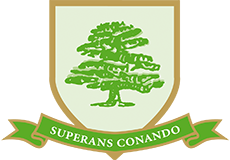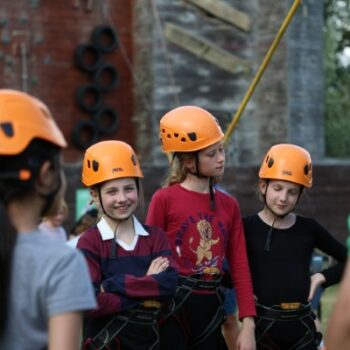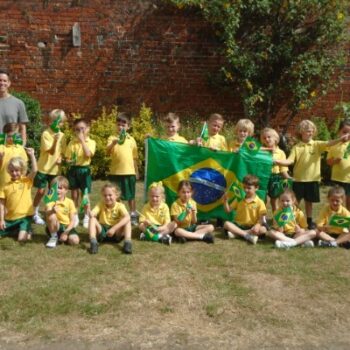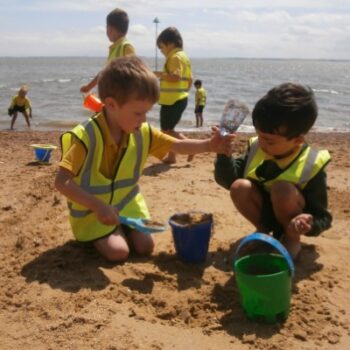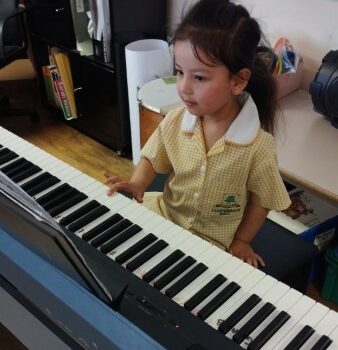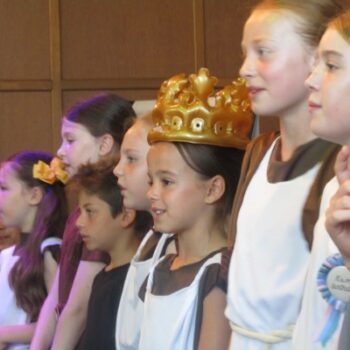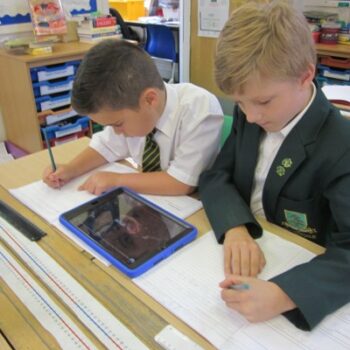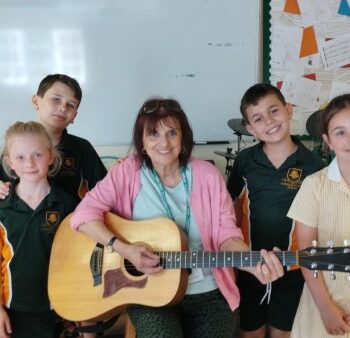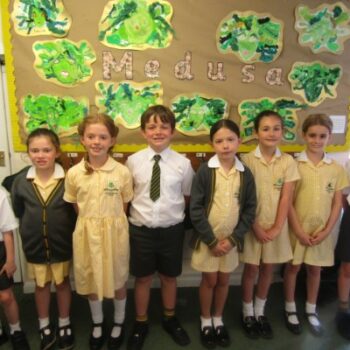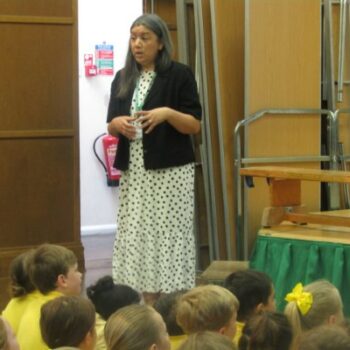On Monday, March 10th, Year 2 spent the day learning about The Great Fire of London and discovering how people lived in London in 1666. Dressed in attire from that time period, the children entered the hall and explored the various types of work people were engaged in during that era. Our host from 1666, Abby, introduced the children to different jobs, explaining that the downstairs of homes was typically where people worked, while the living quarters were upstairs. The children learned about the occupations of apothecaries, scribes, leather workers, seamstresses, weavers, button makers, candlestick makers, and of course, bakers—who all worked alongside one another.
The children then had the opportunity to experience these jobs first hand by visiting various activity tables. They could make their own candles, grind charcoal and Arabic gum to create ink and scribe a letter to the King, imprint their names into a leather bookmark, sew their initials into a muslin square, create a sweet-smelling posy at the apothecary table, and even make a button out of clay. The hall buzzed with activity as everyone participated in the different tasks. When Abby rang her bell, the children learned about how the fire in London was progressing, helping them understand how quickly the flames were spreading through the streets.
The children also lined up at the well and re-enacted how people would have carried water to fight the fire. They learned that it wasn’t until the King became aware of the situation that parts of London were deliberately exploded to create fire barriers and help contain the blaze. Remaining in character, the children enjoyed a snack of apple and cheese.
In the afternoon, they became detectives, searching through a box of rubble to find fragments and determine what had happened to the home. Their task was to figure out who had lived there and whether the home had burned down, been demolished, exploded, or survived The Great Fire of London. The children carefully excavated their findings and within their groups, discussed their conclusions.
Afterward, they were given a pouch containing parchment with information about the home’s occupation, its owner’s social status, and what had happened to them. It was incredible detective work, and the children were fully engaged in this immersive experience.
The day flew by and everyone learned so much. The fire destroyed 87 churches and 13,500 houses and the first recorded death was the maid from the Pudding Lane bakery, where the fire started.
The children expressed their gratitude to Abby for the wonderful workshop and for bringing history to life in such an engaging way. She gave them a deeper understanding and respect for the hardworking people of London. Mrs. Burgess and Mrs. Hogarth were delighted to see the children actively participating in the activities and working so well together as history detectives. Very well done, Year 2!

